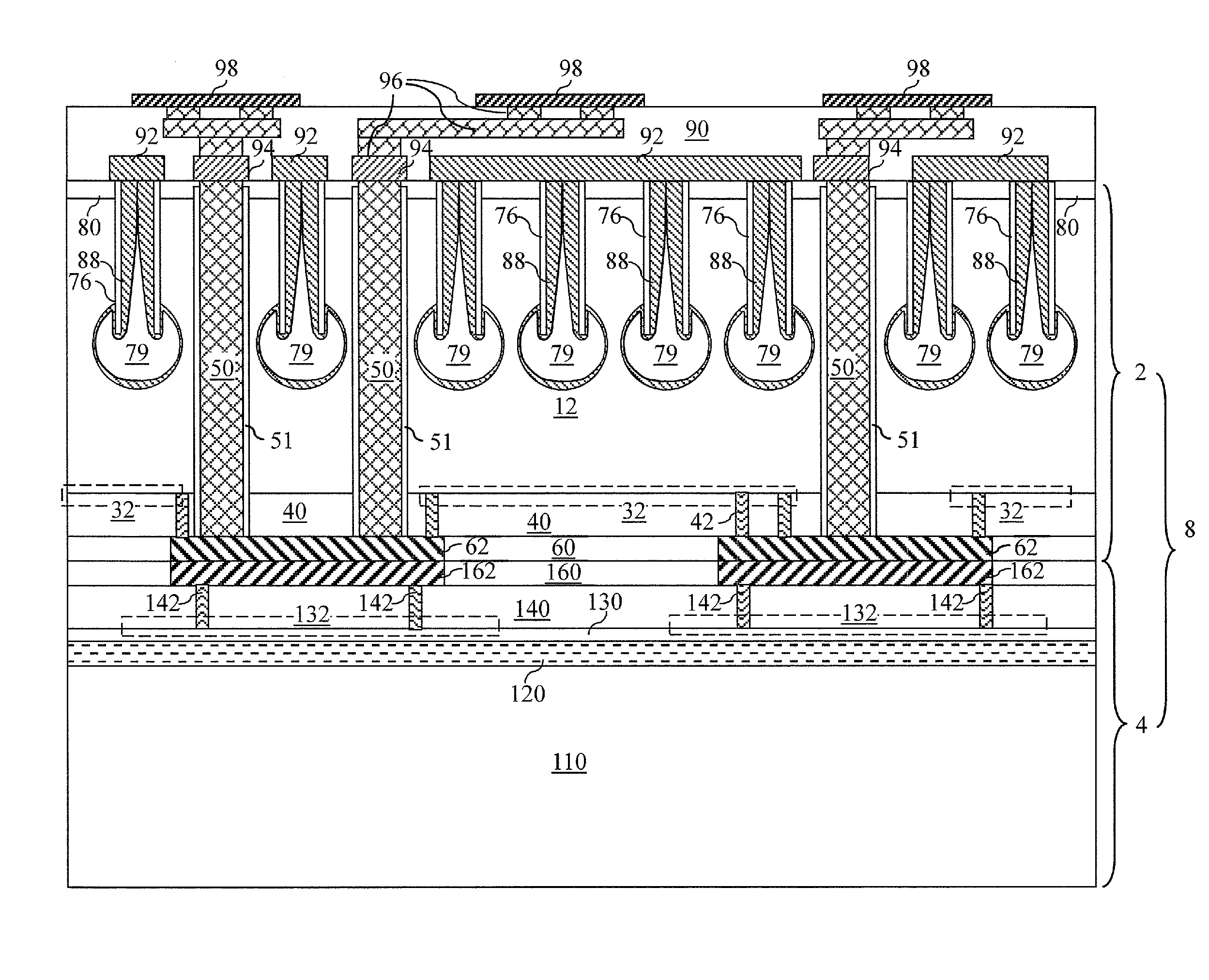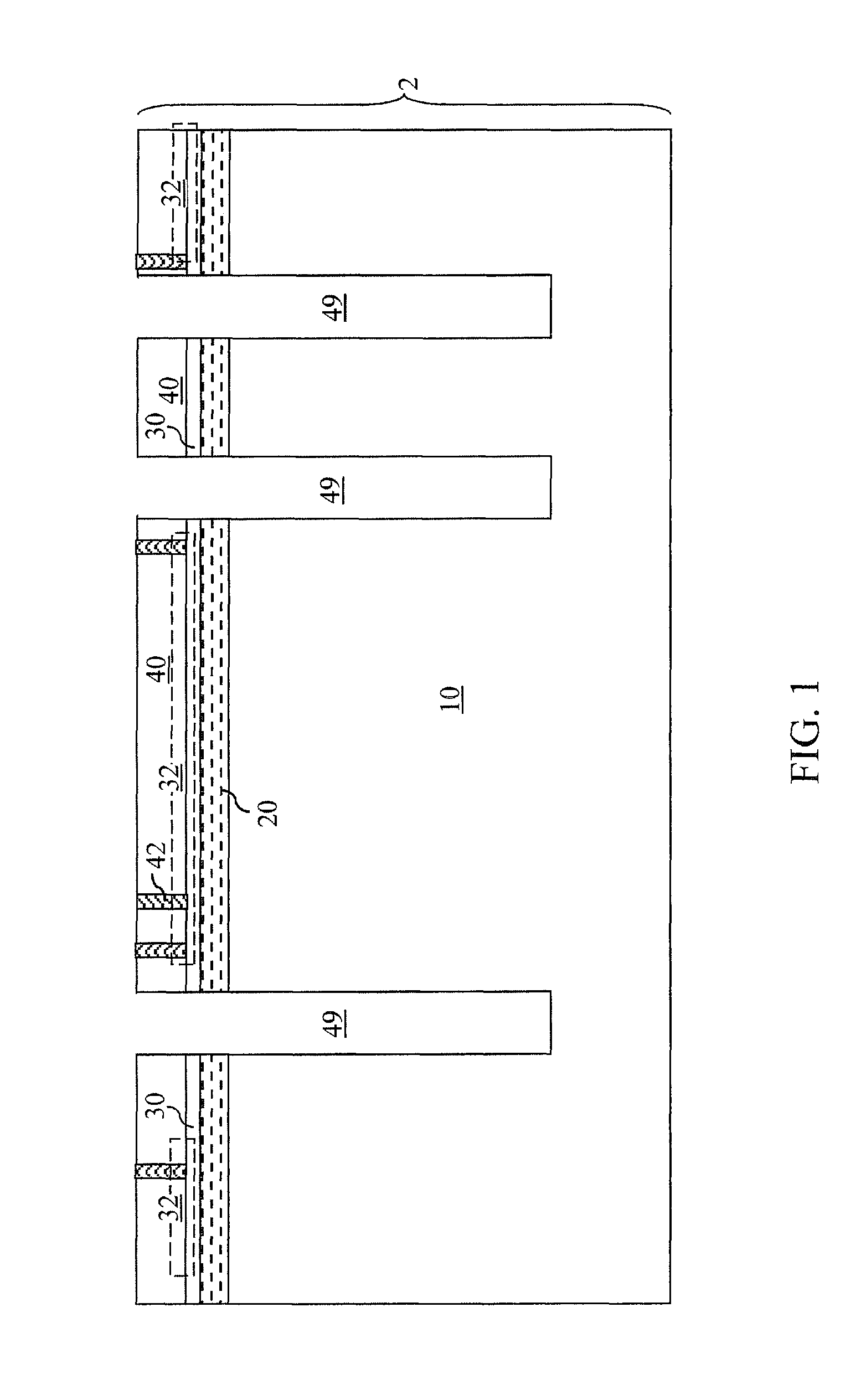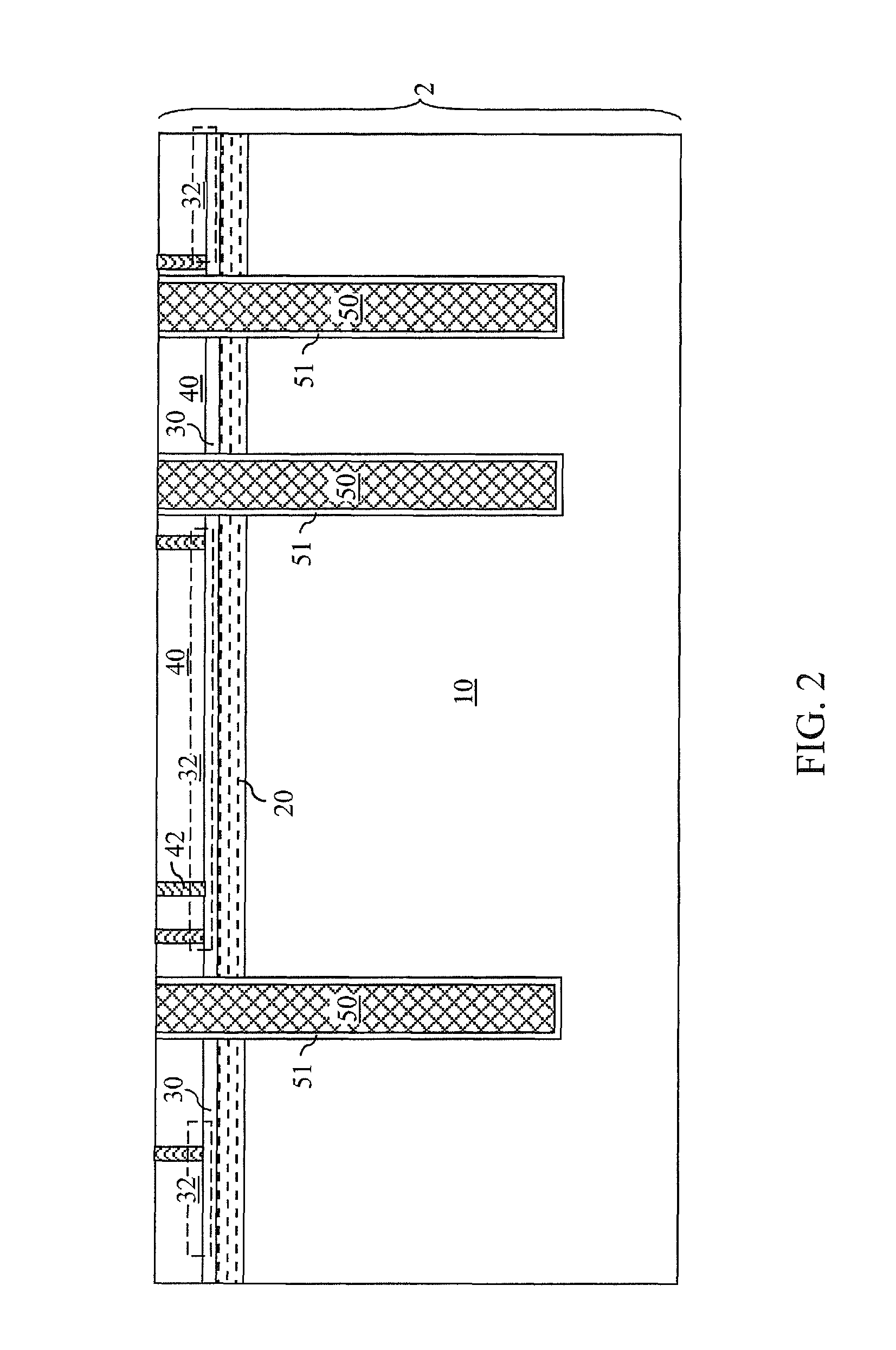Backside dummy plugs for 3D integration
a backside dummy plug and 3d integration technology, applied in the field of semiconductor structure, can solve the problems of reducing the area available for use as active areas, reducing the overall system level performance of multiple semiconductor chips, and reducing the chip area available for use, so as to improve the vertical thermal conductivity of the semiconductor structure, enhance the inter-wafer thermal conductivity, and reduce the effect of mechanical stress on the substra
- Summary
- Abstract
- Description
- Claims
- Application Information
AI Technical Summary
Benefits of technology
Problems solved by technology
Method used
Image
Examples
first embodiment
[0025]Referring to FIG. 1, a first exemplary semiconductor structure according to the present invention includes a first substrate 2. The first substrate 2 can include a semiconductor-on-insulator (SOI) substrate, a bulk semiconductor substrate, or a hybrid substrate including at least one SOI portion and at least one bulk portion. If the first substrate 2 includes an SOI substrate, the SOI substrate can contain, from bottom to top, a first handle substrate 10, a first buried insulator layer 20, and a first top semiconductor layer 30.
[0026]The first handle substrate 10 can include a semiconductor material, a dielectric material, a conductive material, or a combination thereof. Typically, the first handle substrate 20 includes a semiconductor material. The thickness of the handle substrate 10 can be from 100 microns to 1,000 microns, although lesser and greater thicknesses can also be employed. The first buried insulator layer 20 includes a dielectric material such as silicon oxide, ...
second embodiment
[0054]Referring to FIG. 11, a second exemplary semiconductor structure according to the present invention is derived from the first exemplary semiconductor structure in FIG. 7 by depositing a non-conformal dielectric material layer 74L. The thickness of the non-conformal dielectric material layer 74L is greater than one half of the lateral dimensions of the at least one trench 69. The thickness of the non-conformal dielectric material layer 74L is measured above the upper surface of the optional planarization dielectric layer 80 if the optional planarization dielectric layer 80 is present, or above the upper surface of the first handle substrate 10 if the optional planarization dielectric layer 80 is not present. Each of the at least one trench 69 in FIG. 7 is partially filled with the dielectric material of the non-conformal dielectric material layer 74L, thereby forming therein a cavity 75 surrounded by the dielectric material. Each of the at least one cavity 75 is sealed off by t...
third embodiment
[0062]Referring to FIG. 15, a third exemplary semiconductor structure according to the present invention is derived from the first exemplary semiconductor structure in FIG. 7 by depositing a non-conformal conductive material layer (not shown) instead of a non-conformal dielectric material layer 741, of FIG. 11. The thickness of the non-conformal conductive material layer is greater than one half of the lateral dimensions of the at least one trench 69. Each of the at least one trench 69 in FIG. 7 is partially filled with the conductive material of the non-conformal conductive material layer, thereby forming therein a cavity 75 surrounded by the conductive material. Each of the at least one cavity 75 is sealed off by the conductive material of the non-conformal conductive material layer. The non-conformal conductive material layer can be formed by any non-conformal deposition process that deposits a conductive material. For example, the non-conformal conductive material layer can be d...
PUM
 Login to View More
Login to View More Abstract
Description
Claims
Application Information
 Login to View More
Login to View More - R&D
- Intellectual Property
- Life Sciences
- Materials
- Tech Scout
- Unparalleled Data Quality
- Higher Quality Content
- 60% Fewer Hallucinations
Browse by: Latest US Patents, China's latest patents, Technical Efficacy Thesaurus, Application Domain, Technology Topic, Popular Technical Reports.
© 2025 PatSnap. All rights reserved.Legal|Privacy policy|Modern Slavery Act Transparency Statement|Sitemap|About US| Contact US: help@patsnap.com



